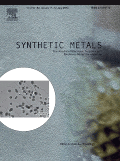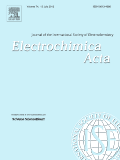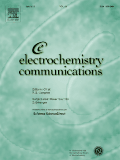
RUSSIAN JOURNAL OF ELECTROCHEMISTRY
Scope & Guideline
Bridging Theory and Application in Electrochemistry
Introduction
Aims and Scopes
- Electrocatalysis and Electrode Materials:
Research on the development and characterization of new electrocatalysts and electrode materials for applications in fuel cells, batteries, and other electrochemical devices. - Electrochemical Sensors and Biosensors:
Focus on the design and application of electrochemical sensors for detecting various chemical and biological species, including medical diagnostics and environmental monitoring. - Energy Storage and Conversion Technologies:
Studies related to electrochemical energy storage systems such as batteries and supercapacitors, as well as technologies for energy conversion like fuel cells and electrolyzers. - Corrosion Science and Protection:
Investigation of electrochemical mechanisms of corrosion and the development of protective coatings and inhibitors to enhance material durability. - Nanostructured and Composite Materials:
Research into the synthesis and application of nanostructured materials and composite systems that exhibit enhanced electrochemical properties. - Theoretical and Modeling Studies:
Theoretical investigations and numerical modeling that provide insights into electrochemical processes, material behaviors, and reaction mechanisms.
Trending and Emerging
- Advanced Electrocatalysts for Energy Applications:
There is a growing trend towards developing advanced electrocatalysts, particularly those based on novel materials like transition metal compounds and carbon nanostructures, aimed at improving efficiency in hydrogen production and fuel cells. - Integration of Nanotechnology in Electrochemistry:
The incorporation of nanotechnology in the design of electrodes and sensors is a major emerging theme, leading to significant improvements in sensitivity and performance. - Sustainable and Green Chemistry Approaches:
Research focusing on environmentally friendly and sustainable electrochemical processes, including CO2 reduction and waste valorization, is gaining traction. - Smart and Flexible Electrochemical Devices:
The development of flexible and wearable electrochemical sensors and devices is trending, driven by applications in health monitoring and environmental sensing. - Electrochemical Energy Harvesting:
Emerging interest in technologies that harvest energy from ambient sources through electrochemical means, including bioenergy and piezoelectric systems.
Declining or Waning
- Traditional Battery Technologies:
Research on conventional lead-acid and nickel-metal hydride batteries has seen a decrease, possibly due to the growing focus on lithium-ion and next-generation battery technologies. - Basic Electrochemical Theory:
Studies that purely focus on classical electrochemical theory without practical applications are becoming less common, as researchers increasingly seek applied outcomes. - Corrosion Studies in Non-Aqueous Systems:
Research centered on corrosion in non-aqueous environments has diminished, with a shift towards more relevant aqueous systems and electrochemical protection methods. - Low-Temperature Fuel Cells:
Interest in low-temperature fuel cells, particularly those that do not utilize advanced catalysts, appears to be waning as the field moves towards high-efficiency and high-temperature systems.
Similar Journals

SYNTHETIC METALS
Exploring New Frontiers in Metallic Materials.SYNTHETIC METALS is a leading academic journal published by Elsevier Science SA, focusing on the interdisciplinary field of materials science with an emphasis on the development and application of synthetic metallic materials. Established in 1979, this esteemed journal offers a platform for innovative research that promotes advancements in condensed matter physics, electronic materials, materials chemistry, and mechanical engineering. With an impressive Q1 ranking in Metals and Alloys and Q2 rankings across various other categories, SYNTHETIC METALS serves as a vital resource for researchers, professionals, and students seeking to explore complex material systems and their applications in industry. Although it does not currently offer open access, the journal's impact is highlighted by its robust Scopus rankings, ensuring high visibility and dissemination of meaningful research outcomes. As it progresses through its convergence period to 2024, SYNTHETIC METALS remains dedicated to advancing knowledge and fostering scientific inquiry in the field of materials science.

Electrochemical Energy Reviews
Empowering Scholars to Shape Tomorrow's Energy SolutionsElectrochemical Energy Reviews, published by SpringerNature, serves as an essential platform for the dissemination of cutting-edge research in the fields of electrochemistry, material science, and energy engineering. With an impressive impact factor and ranked in the Q1 category across multiple disciplines including Chemical Engineering and Energy Technology, this journal highlights its commitment to advancing knowledge and innovation within the energy sector. Operating since 2018, the journal not only provides a valuable resource for researchers and professionals but also invites contributions from students and emerging scholars interested in the pivotal role of electrochemical processes in sustainable energy solutions. Published in Germany and widely accessible to the global research community, Electrochemical Energy Reviews is an indispensable reference for those keen on exploring the future of energy technologies.

Journal of the Korean Electrochemical Society
Empowering Research in Electrochemical Science and TechnologyJournal of the Korean Electrochemical Society (ISSN: 1229-1935, E-ISSN: 1229-1935) stands as a prominent publication in the rapidly evolving field of electrochemistry. Published by the prestigious Korean Electrochemical Society, this journal serves as a vital platform for researchers, professionals, and students eager to disseminate and access cutting-edge studies related to electrochemical processes, materials, and technologies. With an emphasis on promoting innovative research and practical applications, the journal aims to foster collaboration and knowledge exchange within the global electrochemistry community. Although not an open access journal, it provides comprehensive and rigorous peer-reviewed content that ensures the highest scientific quality, making it a valuable resource for anyone involved in the field. Located in Seoul, South Korea, it continues to contribute significantly to the advancement of electrochemical sciences, addressing key challenges and developments that shape the future of technology and environmental sustainability.

Electrochemical Society Interface
Connecting Cutting-Edge Research with Practical SolutionsElectrochemical Society Interface is a prominent journal within the field of electrochemistry, published by the Electrochemical Society Inc. The journal, carrying the ISSN 1064-8208 and E-ISSN 1944-8783, serves as a vital platform for researchers, professionals, and students alike, aiming to bridge the gap between cutting-edge research and practical applications in the electrochemical domain. With a convergence period spanning from 1992 to 2024, the journal enjoys a respectable ranking in the Q3 Quartile of the 2023 Electrochemistry category. Although it does not currently offer open access options, its articles provide valuable insights into various aspects of electrochemical research and technology, enhancing the scholarly communication in this important field. By maintaining high standards in research dissemination, Electrochemical Society Interface continues to foster innovation and contributes significantly to the developments in electrochemical processes and materials.

ELECTROCHIMICA ACTA
Catalyzing Knowledge in Electrochemistry Since 1959ELECTROCHIMICA ACTA is a prestigious academic journal dedicated to the field of electrochemistry and chemical engineering. Published by PERGAMON-ELSEVIER SCIENCE LTD, this journal stands out with its impressive impact factor and is categorized in the top quartile (Q1) for both Chemical Engineering and Electrochemistry in 2023, further cementing its role as a leading venue for cutting-edge research. With a publication history dating back to 1959 and converging into 2024, it has established a substantial archive of influential articles that explore various aspects of electrochemical processes, materials, and applications. Researchers and professionals in the field benefit from the journal’s high visibility, as it ranks remarkably well according to Scopus metrics, with a position in the 90th percentile for General Chemical Engineering and 84th percentile for Electrochemistry. Although ELECTROCHIMICA ACTA does not currently offer open access, it continues to serve as a vital resource for those seeking to expand their knowledge and explore innovative developments in electrochemical science.

ELECTROCHEMISTRY COMMUNICATIONS
Empowering Researchers with Cutting-Edge Electrochemical KnowledgeELECTROCHEMISTRY COMMUNICATIONS, published by ELSEVIER SCIENCE INC, is a leading journal in the field of electrochemistry, holding a prestigious position in the Q1 quartile since 2023. With an impact factor reflecting its esteemed reputation, the journal ranks #15 out of 60 in the Scopus Chemistry category for Electrochemistry, placing it in the 75th percentile. Since adopting an Open Access model in 2019, it has garnered widespread visibility and accessibility, enabling researchers and professionals to share groundbreaking findings and foster innovation. Covering a wide range of topics from fundamental electrochemical research to practical applications, ELECTROCHEMISTRY COMMUNICATIONS serves as a critical platform for disseminating knowledge and advancing the field. The journal's commitment to quality and relevance positions it as a vital resource for academics and practitioners striving to stay at the forefront of electrochemical science.

JOURNAL OF THE ELECTROCHEMICAL SOCIETY
Driving Theoretical and Experimental Breakthroughs in ElectrochemistryJOURNAL OF THE ELECTROCHEMICAL SOCIETY, published by the ELECTROCHEMICAL SOCIETY INC, is a leading peer-reviewed academic journal dedicated to advancing the field of electrochemistry and its myriad applications. With an ISSN of 0013-4651 and E-ISSN of 1945-7111, this esteemed journal has been a pivotal platform for research since its inception in 1948, with convergence periods allowing for a rich historical context of study through to 2024. Recognized for its high impact, it holds a noteworthy Q1 ranking in several categories including Condensed Matter Physics and Materials Chemistry, and it is Q2 ranked in both Electrochemistry and Renewable Energy. This journal features a range of articles that encompass both theoretical and experimental advancements, making it a crucial resource for researchers, professionals, and students keen on exploring cutting-edge developments in materials science, energy solutions, and sustainable technologies. Although it is not an open access journal, its rigorous standards ensure that published work significantly contributes to the body of knowledge within its fields, fostering innovative research and collaborative progress.

Electrocatalysis
Illuminating the Path to Electrochemical Breakthroughs.Electrocatalysis, published by SPRINGER, is a leading journal dedicated to advancing the field of electrochemistry, providing a comprehensive platform for the dissemination of cutting-edge research and innovative methodologies from 2010 to 2024. With an ISSN of 1868-2529 and an E-ISSN of 1868-5994, this journal has established a reputable presence, ranking in the Q3 category of the electrochemistry segment as of 2023 and positioning itself within the 29th out of 60 in the Scopus classification. The journal welcomes submissions that explore a wide array of topics involving electrocatalysts, their applications, mechanisms, and advancements, aiming to catalyze the understanding of electrochemical systems and foster interdisciplinary collaborations. Although the journal is not openly accessible, it remains a vital resource for researchers, professionals, and students seeking to stay abreast of the latest findings and theoretical developments in this dynamic field.

Portugaliae Electrochimica Acta
Catalyzing Discovery in Electrochemical ProcessesPortugaliae Electrochimica Acta is a distinguished journal dedicated to the field of electrochemistry, published by the SOCIEDADE PORTUGUESA ELECTROQUIMICA. With a notable ISSN of 0872-1904, this journal serves as a vital resource for researchers, professionals, and students interested in advancing their understanding of electrochemical processes. Though it is currently categorized in Q4 in the 2023 Electrochemistry rankings, the journal contributes significantly to the academic discourse from its base in Coimbra, Portugal. The journal's timeline spans actively from 2008 to 2025, ensuring a sustained engagement with emerging research. While the journal does not offer open access options, it remains an authoritative source noted for promoting innovative electrochemical research and fostering academic connections within the discipline. Researchers are encouraged to submit their findings and explore the latest contributions to this expanding field.

ACTA CHIMICA SINICA
Advancing the Frontiers of Chemical KnowledgeACTA CHIMICA SINICA, published by SCIENCE PRESS, is a distinguished peer-reviewed journal in the realm of Chemistry, specifically focusing on general and miscellaneous chemistry fields. Since its inception in 1982, the journal has consistently contributed to the advancement of chemical research in China and beyond, maintaining a reputable standing within the academic community, evidenced by its 2023 Scopus ranking of #197 out of 408 in its category. With a current impact factor placing it in the Q3 quartile, ACTA CHIMICA SINICA aims to disseminate innovative research findings, covering a wide spectrum of topics within the discipline. Although it is not an open-access journal, it offers various access options through institutional subscriptions, ensuring that its high-quality content is available to a broad audience. Researchers, professionals, and students alike will find this journal a vital resource for keeping abreast of developments in the field and for contributing their own findings to an engaged scientific community.